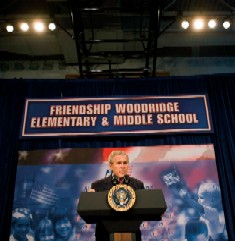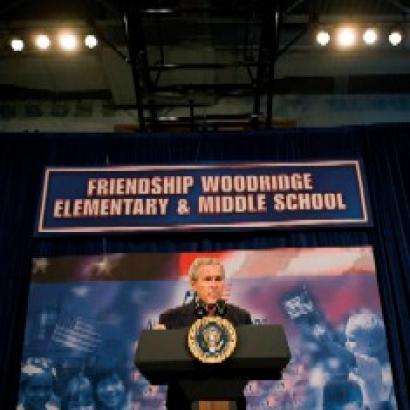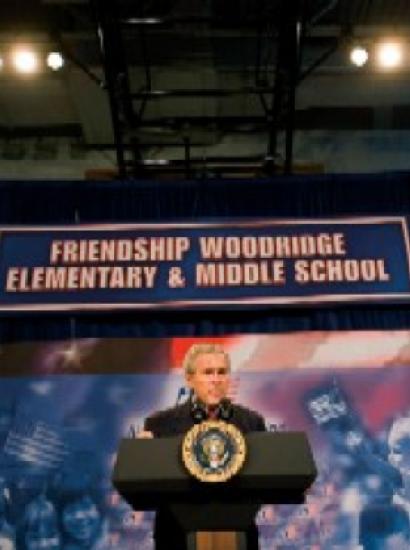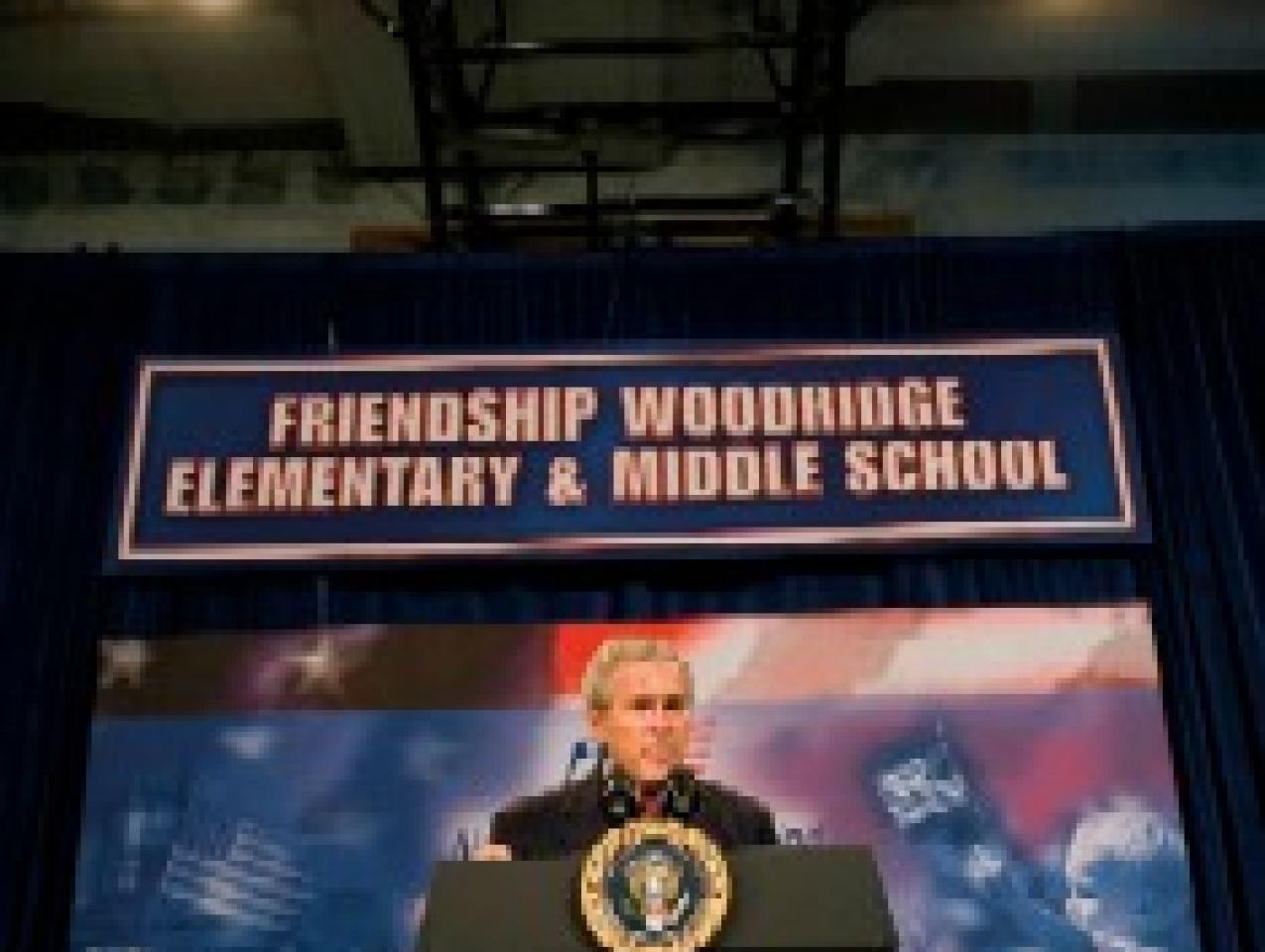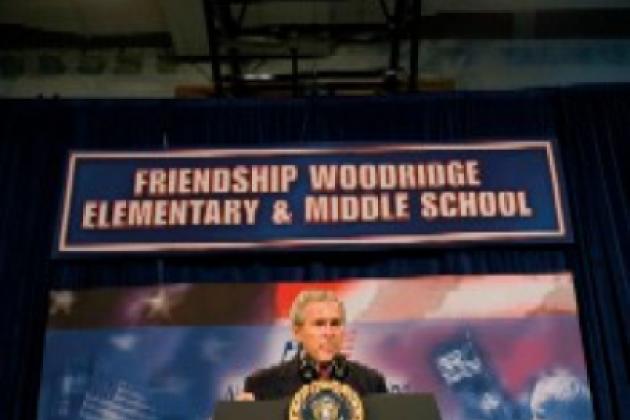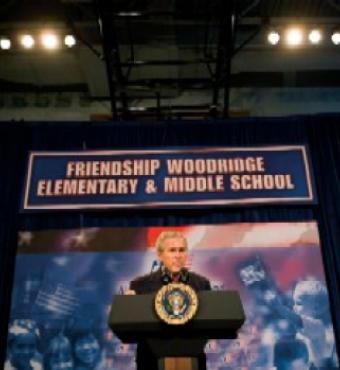- Education
- K-12
For five years now, I’ve considered myself a supporter of the No Child Left Behind Act, and not just the casual flag-waver variety. Much of that time I spent inside the Bush administration, trying to make the law work, explaining its vision to hundreds of audiences, even wearing an NCLB pin on my lapel. I was a True Believer.
In a way, I still am. After all, in the twenty-first century, saying you “support” NCLB is shorthand for affirming a set of ideas, values, and hopes for the country as much as an expression about a particular statute. I’m not just referring to the proposition that “no child should be left behind”—the notion that we have a moral responsibility to provide a decent education for everyone. Ninety-nine percent of the education establishment can get behind that purpose of the law and still resist meaningful reform.
I mean a set of powerful—and controversial—ideas that provide the subtext for all the big NCLB battles. First, that virtually all children have the capacity to achieve a reasonable level of proficiency in reading and math by the time they turn 18—and that it’s the education system’s job to make sure they do. Second, that everyone benefits from having someone looking over his shoulder and that schools and school systems need external pressure—that is, accountability—to improve; good intentions aren’t enough. Third, that good education is synonymous with good teaching. This requires good teachers, which every child deserves but which today’s education bureaucracies, licensure rules, ed schools, and union contracts too often impede. Fourth, that giving parents choices within the education system has all kinds of benefits, from creating healthy competitive pressures to allowing educators to customize their programs instead of trying to be all things to all people. And fifth, that improving education is a national imperative and that the federal government can and should play a constructive role.
| When it comes to informing parents, creating new schools, or implementing almost any of NCLB’s many pieces, it’s not enough for states or districts to go through the motions. They have to want to succeed. |
In other words, at the level of ideas, NCLB is the embodiment of the 1990s education reform playbook. Educators, policy makers, think tankers, and activists who support NCLB are saying, “I’m part of the education reform team.”
But does that mean that they necessarily agree with the machinery of the law itself? Speaking personally, I’ve gradually and reluctantly come to the conclusion that NCLB as enacted is fundamentally flawed and probably beyond repair.
Of course, I harbored doubts about certain specifics from the beginning. You didn’t have to be a genius to see the “highly qualified teachers” mandate as a huge overreach and a probable failure, as it took a reasonable notion (teachers should know their stuff) and tried to enforce it through a rigid rule-based mechanism (second-guessing principals who, for instance, hired engineers as math teachers). Nor was it hard to determine that asking all states to reach universal “proficiency” by 2014 but allowing them to define “proficiency” as they saw fit would create a race to the bottom.
Other flaws took me longer to appreciate. For example:







